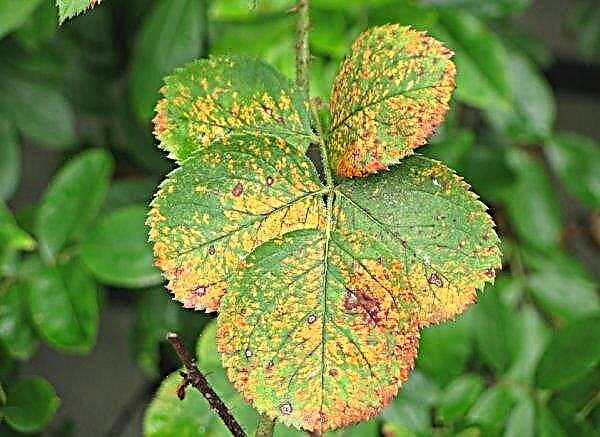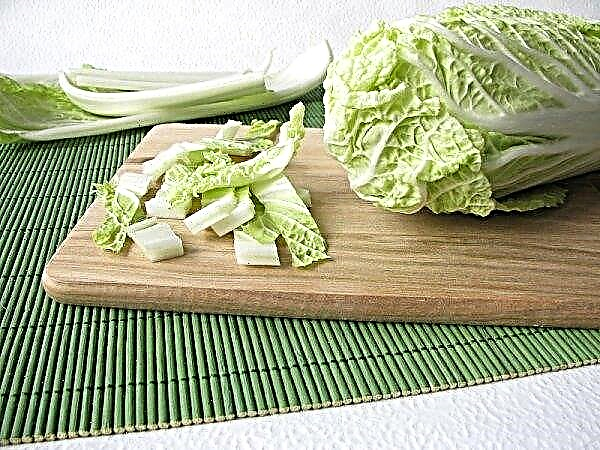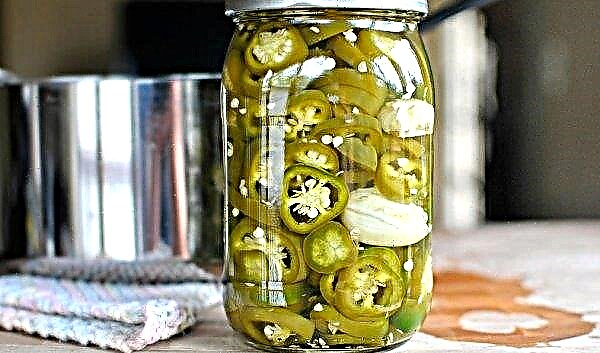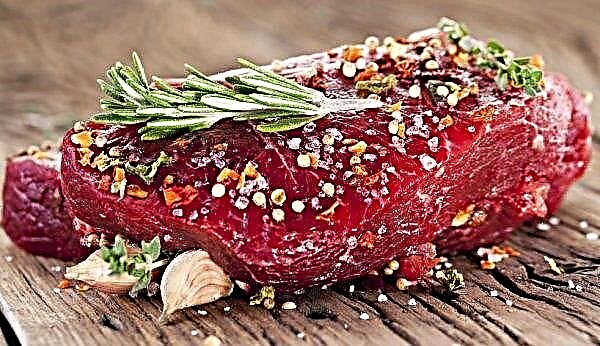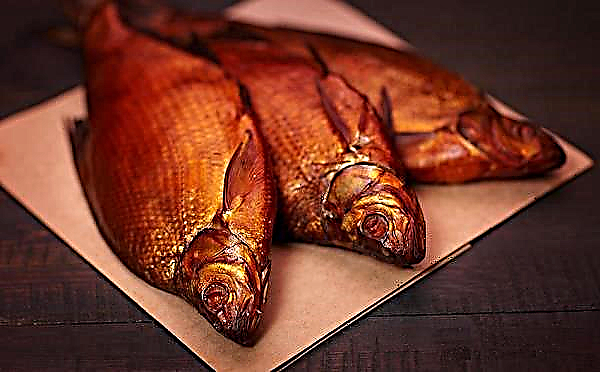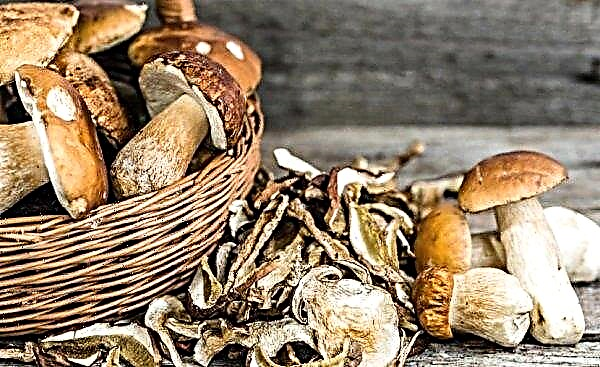Indoor violet is one of the most delicate flowers, and the variety of its varieties will satisfy every taste. Today we will talk about the variety Aquamarine, its description, the conditions of cultivation and reproduction.
Botanical description of the plant
Saintpaulia, as they call indoor violet, Aquamarine varieties were born in 2007, thanks to the work of breeder from Ukraine Svetlana Repkina. Svetlana is the author of more than 200 new varieties, in catalogs and at exhibitions all the names of her series have the letter prefix RS (author's initials). The bush rosette is collected tightly, up to 25 cm high. Leaves on long dense petioles with a lace edge, green. As with most violets, leaf blades are pubescent with a soft pile.
Did you know? The ancient Greeks considered violet a talisman for a home and a couple in love. Flower petals were added to magical love drinks.
Terry inflorescences are collected in a basket of several layers of terry petals. The main color of the flowers is white; in the outer row, it is light green. Petals are distinguished by blue stains, uneven and uneven. The diameter of the flowers is up to 6 cm. The plant blooms 9 months after planting. It blooms luxuriantly - up to 11 buds on the peduncle, and for a long time - up to 2 months. It is noteworthy that inflorescences may take up to 4 weeks to fully open.
The conditions for growing violets at home
Saintpaulia is a delicate plant; it needs a certain microclimate for normal and healthy development.
Placement and lighting
You can position the plant on any illuminated windowsill. It should be borne in mind that the lighting should be bright, but diffused. From direct sunlight, the flower should be shaded. The distance from the heating devices should be at least half a meter. Draft violets are contraindicated. In winter, the bushes need to be illuminated with the help of a phytolamp; the daylight should last 10-12 hours. The distance from the lamp to the bush should not be less than 30 cm.
Temperature and humidity
Aquamarine is a heat-loving variety, its temperature should be + 20 ... + 25 ° С during the day, and not lower than + 18 ° С at night. The flower does not tolerate dry and waterlogged air equally poorly, so 50% humidity is an ideal indicator.
Did you know? The progenitor of all indoor varieties of violets is one species - African violet, which Walter von Saint-Paul opened to the world. His name is called indoor copies.
Basic rules for home care
Given the slow and long flowering, especially carefully follow the rules of the care procedures.
Watering
Watering is carried out in small portions daily in the summer, and in winter they are watered 2 times a week. Water must be settled for a day, its temperature should not be lower than + 20 ° C. Water the flower through a tray or by immersion. In this case, the root system will take as much moisture as needed. The remaining water from the pan is drained. To determine the frequency of watering, it is enough to check the depth of soil moisture in the pot: the norm is a wet third of the volume of the pot.
Important! You can wash off the dust from the leaves with a warm shower, but after it you need to thoroughly blot the foliage with a dry cloth. Leave fleecy leaves wet is not possible: this will lead to disease.
Fertilizer application
Fertilize RS-Aquamarine from March to October inclusive, with an interval between procedures of 2 weeks. Use balanced mineral complexes, such as "Stimovit." Dilute the drug in a proportion of 25 ml / 1 liter of water, water the plant under the root. Application is carried out after watering, not exceeding the dosage, so as not to burn the roots.
This drug is universal in use:
- nourishes with vitamins and minerals;
- protects from external influences;
- stimulates growth and flowering.
Pruning
Pruning, as such, the plant does not need, but the lower leaves must be removed periodically. If the foliage touches the soil, this can provoke its disease. To stimulate longer flowering, wilted inflorescences are cut off.
Transfer
The frequency of transplantation depends on the growth of the bush, about once a year, adult bushes need a capacity change. The best period for transplanting is spring. In winter and late autumn, the plant does not have enough sunlight and heat to restore and adapt, you have to use the backlight. In summer, transplantation can cause stress due to extreme heat. That is why during these periods transplantation is performed only in case of illness.
It is not recommended to transplant a flower during the active formation of buds: this will delay flowering. The procedure requires a capacity of 2-3 cm larger in size than the previous one. It is advisable to take a plastic pot, since moisture evaporates faster in clay or ceramics. Saintpaulia loves loose soil, which can be chosen both in the store and prepared independently.
For soil, the following components are needed in a proportion of 5: 3: 1:
- chernozem;
- high peat;
- coarse sand.
Transplant Technology:
- Expanded clay is put on the bottom of the pot with a layer of 2-3 cm.
- Pour a hill of soil.
- The flower is carefully thrown out of the old container, trying not to damage the roots.
- The adhering earth is carefully shaken off.
- On a hill of soil in a new pot a flower is placed so that when the soil falls asleep, the lower leaves do not touch the surface of the earth.
Video: violet transplant
How to propagate at home
It is easiest to propagate a plant by the vegetative method: dividing a bush or leaf.
The technology of reproduction by division is as follows:
- After the bush has faded, it is tapped out of the container by tapping on the pot.
- A sharp, disinfected knife cuts off the "baby."
- For a "baby" pick up a small, up to 6 cm in diameter, pot. A young plant is planted under the film.
- The film is cleaned daily for airing and spraying the soil.
- The old bush is cleaned, if necessary, of dry or damaged parts and placed back into the pot.
 Leaf propagation is carried out either in spring or in autumn.
Leaf propagation is carried out either in spring or in autumn.Its technology is as follows:
- Choose a leaf from the second or upper line of the bush, without spots and damage, elastic to the touch.
- The leaf with the cuttings is cut at an acute angle.
- In a container with boiled water, add 2 tablets of crushed activated carbon and place a sheet there.
- As soon as roots longer than 1 cm appear, the stalk is placed in a container with soil.
- The roots should be completely covered with soil.
Video: violet leaf propagation
Growing difficulties
The variety has strong immunity from diseases and pests, however, some problems may arise due to improper care or violation of the maintenance regime.
The main diseases and pests, as well as methods of combating them are presented below:
- Thrips - sucking pests with an elongated, brown body, up to 2 mm in size. To combat thrips, Inta-Vir is used. The solution is prepared in the proportion of 1/8 tablets per 1 liter of water.
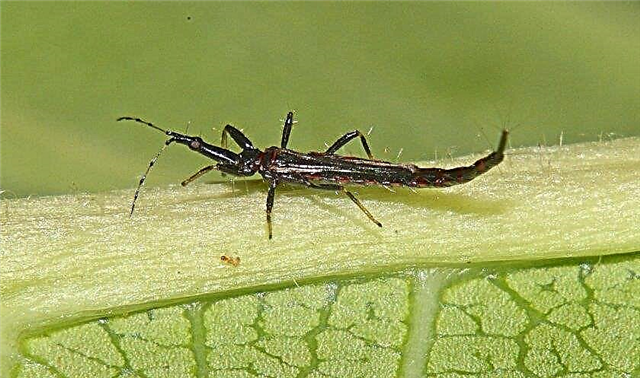
- Aphid - a small, usually green insect, dangerous in that it reproduces very quickly. It settles most often on the underside of the leaf. An effective remedy against aphids is the drug "Actellicus" (2 ml / 2 l of water, sprayed).

- Spider mite - loves overdried air, black dots on foliage are signs of its appearance. It should be fought with acaricides, for example, Acarina (8 ml / 1 liter of water), spraying the plant.

- Gray rot - gray mold is fungal in nature, begins to affect the plant from the center of the outlet. The patient specimen should be removed away from other plants, transplanted into a new soil and sprayed with Alirin-B (2 tablets per 10 liters of water).

- Powdery mildew - a fungal disease whose spores live in the soil and on the green part of plants. The main signs: the appearance of small whitish lumps. For treatment, spraying with Bactofit is used (2 ml / 1 l of water). If necessary, the treatment is repeated after 10-12 days.

Important! The main reason for the appearance of fungi and insects (with the exception of the tick) — this is high humidity at low air temperatures.
The violet of the Aquamarine variety attracts gardeners with its unusual color and excellent immunity. The plant quickly adapts to new conditions, if, of course, you create the right environment and care for it.







